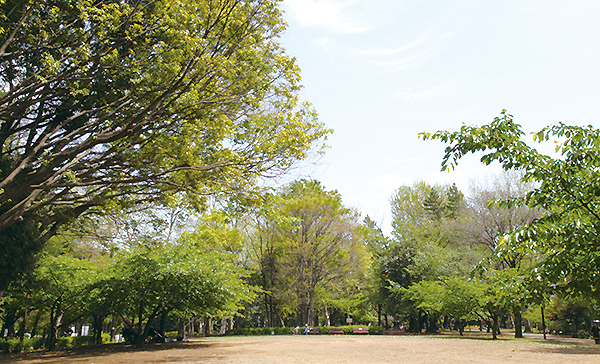Discovering the Attractive Qualities of Shinagawa!
One Hundred Scenes of Shinagawa—Part 2: Ebara area
“One Hundred Scenes of Shinagawa” were selected by city residents.
One Hundred Scenes of Shinagawa—Part 2: Ebara area
Ebara area is a popular residential area with convenient transportation, and there are some famous shopping districts bustling with shoppers near the stations. Featuring lush natural greenery in the parks and shrines within the area, the natural environment and convenience coexist in harmony in the area.
Rinshinomori Park
(2-6 Koyamadai)
This park is almost twelve hectares in size, and was built on land once used by Japan’s Forestry Agency for testing. Rinshinomori has a grassy plaza area, promenades for leisurely strolls and a splashing pool for small children. It is an oasis for city residents, and you can see people taking walks, sketching and otherwise relaxing.
Koyama-hachiman Shrine
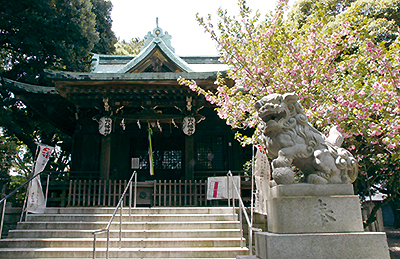 |
(7-5-14 Ebara)
Koyama-hachiman Shrine was known and loved by local people as the guardian shrine of the former Koyama Village. The shrine is located on a hill which is the highest area of Shinagawa City (35 meters above sea level). It is said that the name of Koyama was derived from the geographic features (koyama means “small hill” in Japanese). You can look out over city buildings and homes from the shrine grounds, and even see Tokyo Tower on a clear day. |
Hatagaoka-hachiman Shrine and Kamakura-michi
(3-6-12 Hatanodai)
During the Kamakura Period (1185–1333), samurais of the Genji clan reportedly built this shrine. Names related to Genji, including Kamakuramichi Road and Genjimae, are still used in the area. During the Edo Period (1603–1867), the second-generation Shogun Tokugawa Hidetada and many samurais venerated the shrine. The area escaped damage during the air raids during World War II, and many old wooden votive picture tablets remain in the Ema-do (votive picture tablet hall) within the shrine grounds.
|
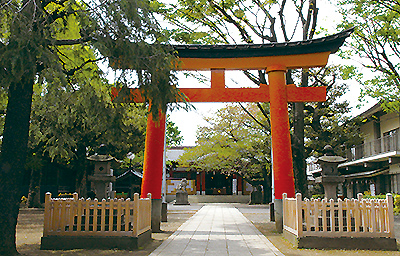
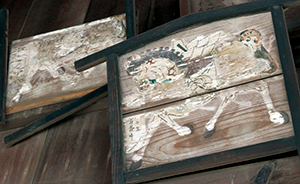
|
Hatanodai Fushimi Inari Shrine
(5-15-2 Hatanodai)
Volunteer members of the town residents who worshiped Fushimi Inari built this shrine in 1916. Red torii gates and old trees surround the shrine, which is known and loved as the guardian shrine of the community. |
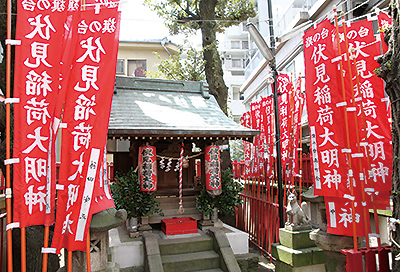 |
Shopping District
Three shopping districts in Ebara area were selected as some of the “One Hundred Scenes of Shinagawa.” These shopping districts are well known and crowded with shoppers, and each has its own unique characteristics.
Bustling Activity of Togoshi-Ginza Shopping District
(Hiratsuka 1- and 2-chome, Togoshi 1- and 2-chome and Yutakacho 1-chome)
This was the first shopping district in Japan to bear the name “Ginza”at the end of its name. It is famous for its around 1.3-kilometer promenade, which has about 400 shops along its length. The busy atmosphere lives up to the name “Ginza.” |
Bustling Activity of Musashi-Koyama Shopping District
(Koyama 3- and 4-chome and Ebara 3-chome)
Musashi-Koyama Shopping District was the oldest arcade-style mall in Japan. Today it has a dome that can open and shut, and is nicknamed “Palm.” It is about 800 meters long with about 250 shops. |
Bustling Activity of Nakanobu Shopping District
(Higashi-nakanobu 2-chome and Nakanobu 3-chome)
From Ebara-nakanobu Station to Nakanobu Station, there are around 120 shops along about 330 meters of land. There are many shops selling vegetables, fresh fish, everyday home-cooked dishes, etc. and this shopping district offers bustling scenes of everyday life. |
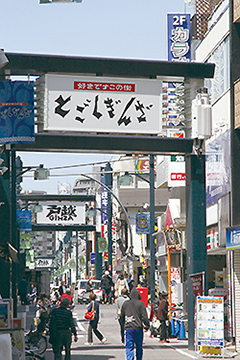 |
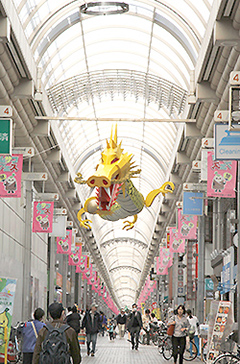 |
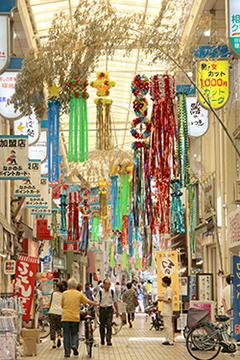 |
|


